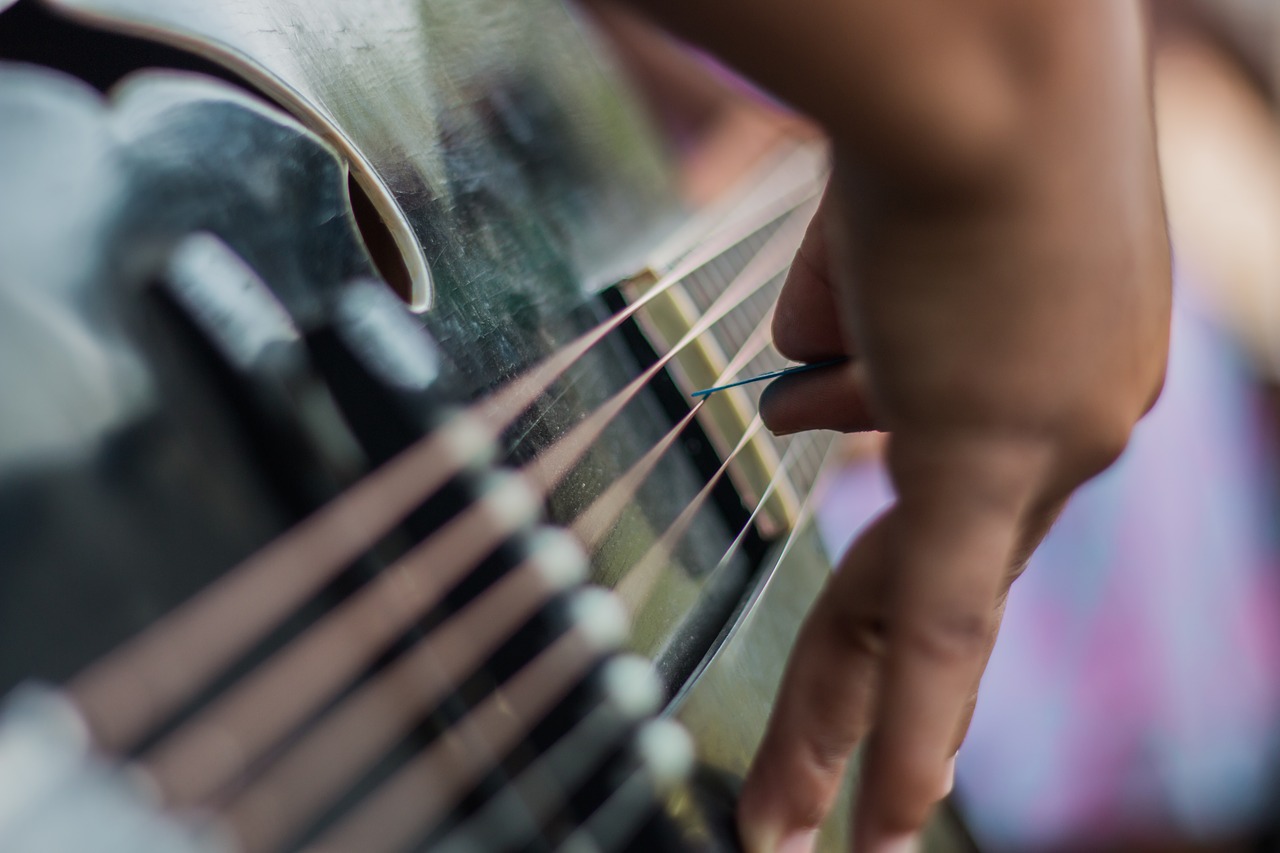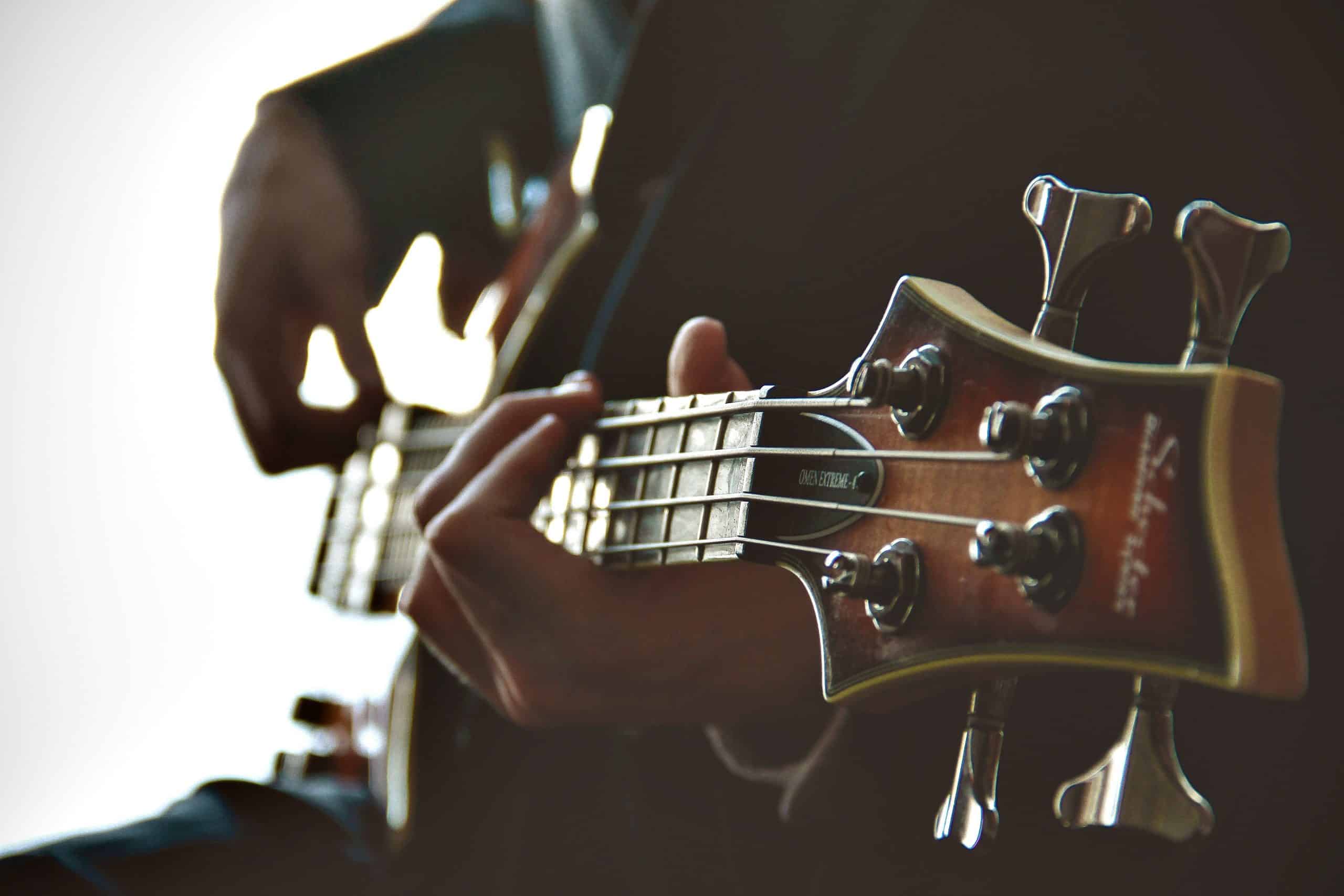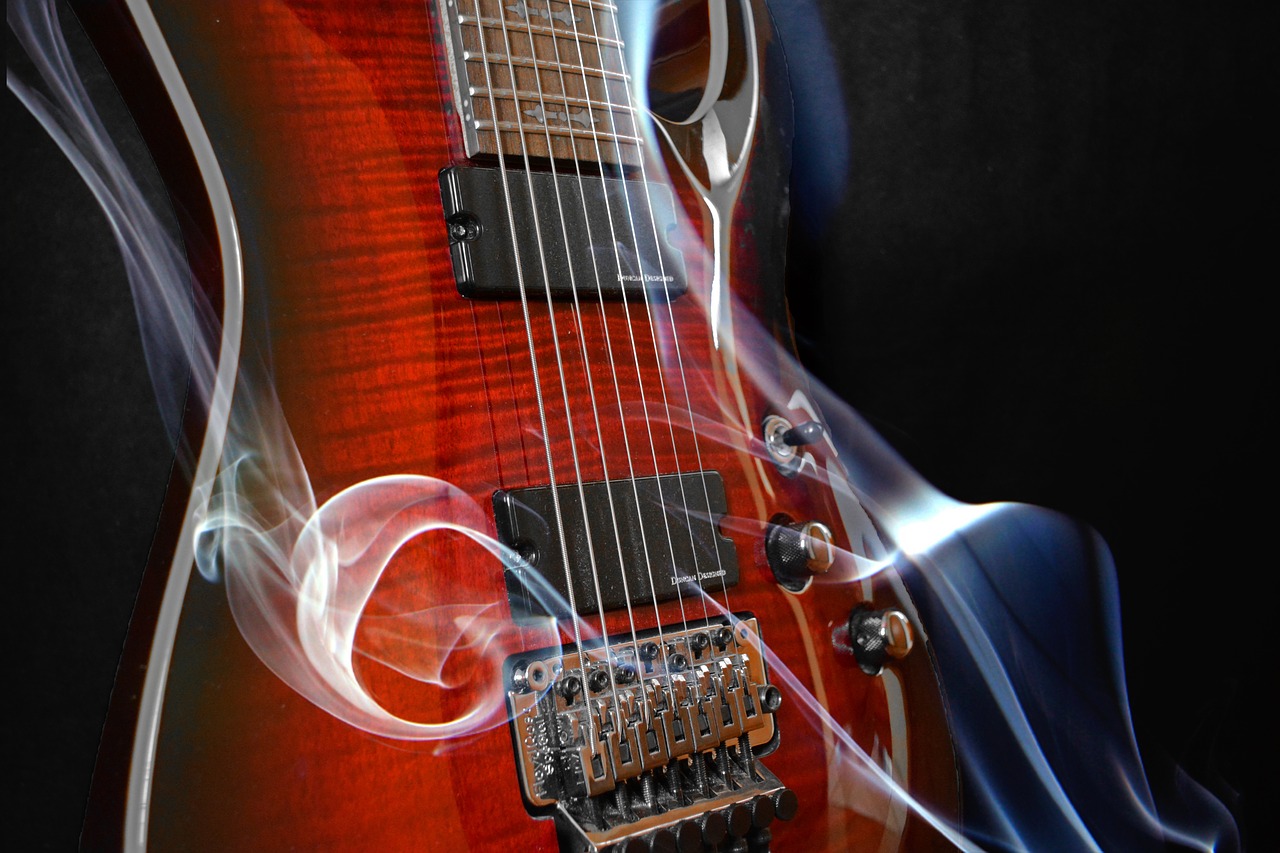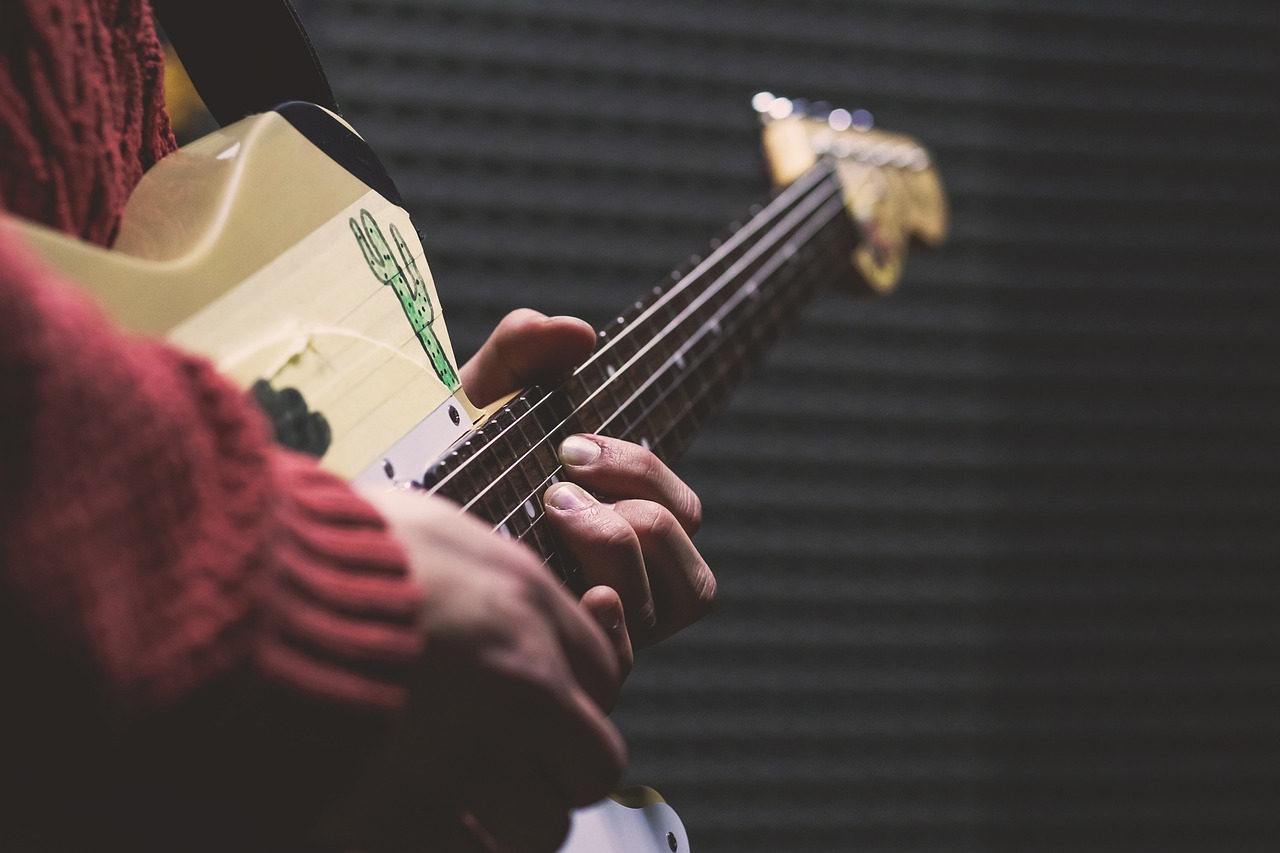Once you realize how many different styles of guitar capo are out there it can get confusing and intimidating to pick one. Here is everything you need to know and a review of the best guitar capo.

The guitar capo is probably the most controversial of all guitar accessories. Some snobs players say "real" guitarists use barre chords.
We say it can open up avenues of creativity to really help with your playing.
The Best Guitar Capos
4. Glider Capo by Greg Bennett
6. Spider
10. Planet Waves NS Guitar Capo Lite
Our Top Pick
Our top pick from this list is the Shubb C1 Nickel Capo. We picked it because it is a solid structure, reliable, easy to use, and at a price point that won't break the bank. Plus, at almost 2,000 Amazon reviews and just under a perfect 5 star ratings, this seems like a no brainer.
Best Guitar Capo Review
1. Shubb C1 Nickel

Description: The Shubb C1 Nickle Capo is designed for use with steel string guitars. It works well with both electric and acoustic guitar due to it’s slight curve.
This one is a bit of a hybrid between trigger and screw style capos. It features the ease and one handed use of a trigger capo and the tension customization of a screw capo.
Pound for pound, Shubb has released a darn near perfect capo.
Weight: 3.2 ounces
Pros:
- holds tuning without changing intonation
- easy one hand design
- inexpensive
- sturdy design
Cons:
- can be frustrating to adjust tension when first using it.
2. Keyser Quick Change

Description: Likely, the most popular and recognizable type of capo. You clamp it onto your guitar neck by squeezing the top and bottom together, placing it on the correct fret, and releasing the clamp. It’s quick application make it ideal for live performance when speed is a necessity.
The Keyser company has been making capos for years and are truly dependable. If you want something that is simple to use, lightweight, and can easily fit in a case or gig bag, this is perfect.
Weight: 2.82 ounces
Pros:
- easy to use
- great for live performance
- durable and high quality
Cons:
- the tension can be too tight and difficult to squeeze
- in rare cases too much tension can leave intentions in the neck of the guitar
- can’t adjust tension
3. G7th Performance 3 ART

Description: The G7th Performance series is the pinnacle of capo design. It features the one handed easy of a trigger, the tension adjustment of a screw, and the near accuracy of a yoke capo.
To use the G7th Performance 3 ART model, you simply position it, and then gently squeeze to lock it in place. If it is not tight enough, you can just squeeze it again until it is.
ART stands for Adaptive Radius Technology. This is a patented innovation that allows the pads to adjust to the curvature of the neck and string set. This eliminates fret buzz and keeps you from constantly having to retune.
While this one is a bit higher in price than the previous entries, it is absolutely worth the investment. It is just as easy to use live as the Keyser. It is the next evolution of quick use capo design.
Weight: 2.22 ounces
Pros:
- ease of use
- doesn’t detune guitar
- intonation is unaffected
- soft interior keeps your guitar safe
Cons:
- price
- may not fit wider neck guitars
4. Glider Capo by Greg Bennett

Description: The Glider is a pretty cool concept. You basically have two soft rubber rollers attached by a pair of springs. One roller lays across the strings the other goes across the back of the neck. You can then push or pull it up and down the neck of the guitar while playing.
The soft rubber of the rollers allows the strings to stay fretted but still easily move up and down the fret board. This is all done without damaging or scratching the neck of the guitar.
Weight: 2.4 ounces
Pros:
- innovative design
- ease of use
- change key while playing
Cons:
- cannot adjust tension
- can pull guitar out of tune
- large size may impede chords played near the capo
5. G7th Ultralight Classical

Description: The G7th Ultralight is a great entry into the G7th capo world. You can experience their high quality design and durability under 15 - 20 bucks.
This capo is a sleek black design with a soft rubber interior to help protect your neck and strings. It features a screw to adjust the amount of tension you need on your strings.
Weight: .299 ounces
Pros:
- inexpensive
- you can adjust the tension
- ease of use
- extremely lightweight (about ¼ ounce)
Cons:
- screw design means it is not one handed
- can be difficult to position the bar correctly across strings
- takes getting used to screw adjustment
- may not fit all guitar necks
6. Spider

Description: The Spider capo is certainly unique. Whereas, most other capos are used to hold down all or most of the strings on a single fret, the Spider is designed to hold down individual strings.
When none of the strings are depressed, you can play above and below this capo. This really is probably the most fun entry on the list. You can use it to play in alternate tunings without having to detune and then retune your guitar.
The Spider capo won the Best in Show Award at the 2009 Summer NAMM convention and has been popular ever since.
Weight: .16 ounces
Pros:
- can switch to alternate tunings mid-song
- fun and innovative design and concept
- can open up avenues of creativity
Cons:
- may not fit all guitars
- some models do not have enough padding and can scratch the neck of the guitar
- may need to readjust the tension when moving from fret to fret
7. Shubb C7B Partial

Description: The Shubb C7B Partial is not like your standard capo. Like the Spider, it is used primarily to achieve alternate tunings.
It’s design will skip the outside string and will fret the 5-4-3 or 2-3-4 strings, depending on where you place it on the neck of the guitar. It features the high quality you would expect from Shubb.
The rubber is high quality and keeps fret buzz to a minimum as well as cushions your neck to avoid marks or damage. It also has an adjustment screw so you can adjust the amount of tension you are applying to your strings.
Weight: 2.20 ounces
Pros:
- unique design allows you to play in alternate tunings quickly and easily
- screw allows you to customize the tension
- lightweight and easy to use
Cons:
- can be difficult to position
- may have to learn some fret board theory to use properly (OH NO!)
8. G7th Heritage

Description: The G7th Heritage Capo featuring ART technology is the highest priced item on this list. However, you get what you pay for and this is a solid tool.
It has a polished stainless steel design with a beautiful etched inlay across the fretboard. The G7th Heritage contains ART technology in the string pad which means it will mechanically wrap around the strings to preserve tuning. It essentially simulates your finger in a barre chord.
The high quality silicon neck pad is centered and distributes the tension across the fretboard to minimize the risk of damage. The classic yoke design also keeps your guitar in tune all while retaining the integrity of your intonation.
It fits almost all guitar sizes and is backed by a lifetime guarantee. Plus, it’s really, really pretty.
Weight: 1.06 ounces
Pros:
- lifetime warranty
- locks in tuning and intonation
- easy to use
- beautiful design
Cons:
- expensive
- adjusting tension takes time to get used to
9. Shubb Deluxe GC-30

Description: Another Shubb capo has made the list. They make high quality products that are too good to pass up. The Deluxe GC-30 is one of, if not the best capo for acoustic guitar.
It features the classic “set it and forget it” tension adjustment design that Shubb is known for. All you need to do to use it is position it where you want and flip the lever on the back. Easy-peasy!
Weight: .32 ounces
Pros:
- retains the guitar’s tone
- easy to use
- can adjust tension
Cons:
- may not fit on all guitar necks
- large radius can cause fret buzz
10. Planet Waves NS Guitar Capo Lite

Description: Planet Waves NS Lite is the final entry to this list. It is the only true screw design capo we have featured.
You can use this one with 6 and 12 string guitars. As well as acoustic and electric. The micrometer tension screw allows you to only apply as much tension as you need to get a clear sound without causing your tuning to go sharp.
Weight: 1.6 ounces
Pros:
- made with lightweight aircraft aluminum
- meticulous tension adjustment screw
- designed to fit a wide variety of guitar necks including acoustic, electric, 6 string, and 12 string
Cons:
- may not be tight enough for thin neck guitars
- may need to replace the rubber after a few years
Buying Advice
When picking out a capo it helps to know what you need it for. Are you just wanting to jam around the campfire? Do you regularly gig and need something quick, sturdy, and reliable? Are you going into the recording studio and you want something that is going to stay in tune and not wreck your intonation?
You will want to figure out what is most important for your own personal musical goals. And whoever made the rule you can only have one? Like many tools, a wide variety never hurt anyone.
What is a capo?
A capo is a device that attaches to the neck of a guitar and holds the strings down to simulate a finger in a barre chord. It is used primarily so one can play open chords in a different key without changing the tuning.
How to use one?
Depending on what type of capo you have will determine how to use one.
Types of Capos
There are few different styles and types of capos. Capos perform the same function but have different ways of achieving that function. Most capos have a hard exterior with a soft, generally rubber, interior.
Trigger/Spring
This is the capo most people are familiar with. It is generally inexpensive. It functions by squeezing an upper and lower piece together. There is a metal rod or spring connecting the two pieces that acts as a clamp and holds it onto the neck of the guitar.
Screw
A screw capo has an upper and lower piece that wraps around the neck of the guitar. You can manually adjust the tension on the strings by turning a screw.
Toggle/Strap
A toggle or strap capo is a pretty simple design. You have a rod, made of metal or hard plastic, wrapped in rubber. This piece sits atop the strings. There is a strap that then wraps around the neck of the guitar and then slides over the other end of the rod through a grommet.
Roller
The roller capo attaches to the guitar in the same way as a toggle or strap style. However, it features two rubber rollers, one on the front for the strings and one on the back for the neck.
The tension is created by a pair of springs that hold both pieces together. The loose grip combined with the rollers allows you to move it up and down the neck without taking it off.
Partial
A partial capo is exactly what it sounds like. It is designed to depress a few strings at a time instead of the full set. Generally, these come in either trigger or screw styles.
Yoke
The yoke style is probably the most heavy duty and cumbersome. It is also probably the most consistent and precise capo.
It has a metal bar connected to a hinge that closes across the top of the strings. On the back is a screw or dial that then presses a pad directly into the center of the neck.
This design allows an even distribution of pressure and helps retain the guitar’s intonation across all of it’s strings. So it is not a great choice for live performance but it is excellent for at home play or in the studio. The G7th Heritage above is an example of a yoke capo.
Spider
The spider capo is the most unique of all capos on this list. It is designed to press individual strings instead of all strings at once. When it is no engaged you can play above and below it on the neck.
This design, similar to a partial capo, can allow you to play some chord variations that would otherwise be impossible (without growing an extra hand).
Can you use one on a ukulele?
You can use a capo on pretty much any stringed instrument. You may have to experiment a bit with neck size, thickness, string type, etc. But you can use one on a ukulele, a banjo, a mandolin, and more.
Top choice
Again, our top overall choice for best guitar capo is the Shubb C1 Nickel Capo. If you want the most bang for your buck this will cover all of your bases.
Shubb is a trusted brand in the industry. It’s design is sleek and easy to use. Their patented clamp system is strong enough to keep you playing in tune but also gentle on your neck and strings. Plus, it’s a the right price that you won’t have to feel guilty about buying yet another guitar accessory.
Premium choice
Our premium pick is the G7th Heritage. The yoke design gives you more control over the pressure on which you are putting on your strings. G7th, like Shubb above, is a consistent and trusted name in the guitar and capo industry. If you are looking for a solid and reliable capo, you can’t go wrong with this one.
Great Value
You can’t beat a classic and the Keyser Quick Change is THE classic image of a capo. It is great for live performance and when you just want to noodle around on the guitar. The price is also right to grab one today and get to playing.
Conclusion
The capo is an awesome tool that every guitarist should have in their arsenal. With all the great choices on this list we’re sure you’ll find the right one for you!





Leave a Reply